St John Marylebone marks a new era for the famed London restaurant
We visit St John Marylebone, which carries on the legacy of the famed London restaurant and brings its signature style to a new location
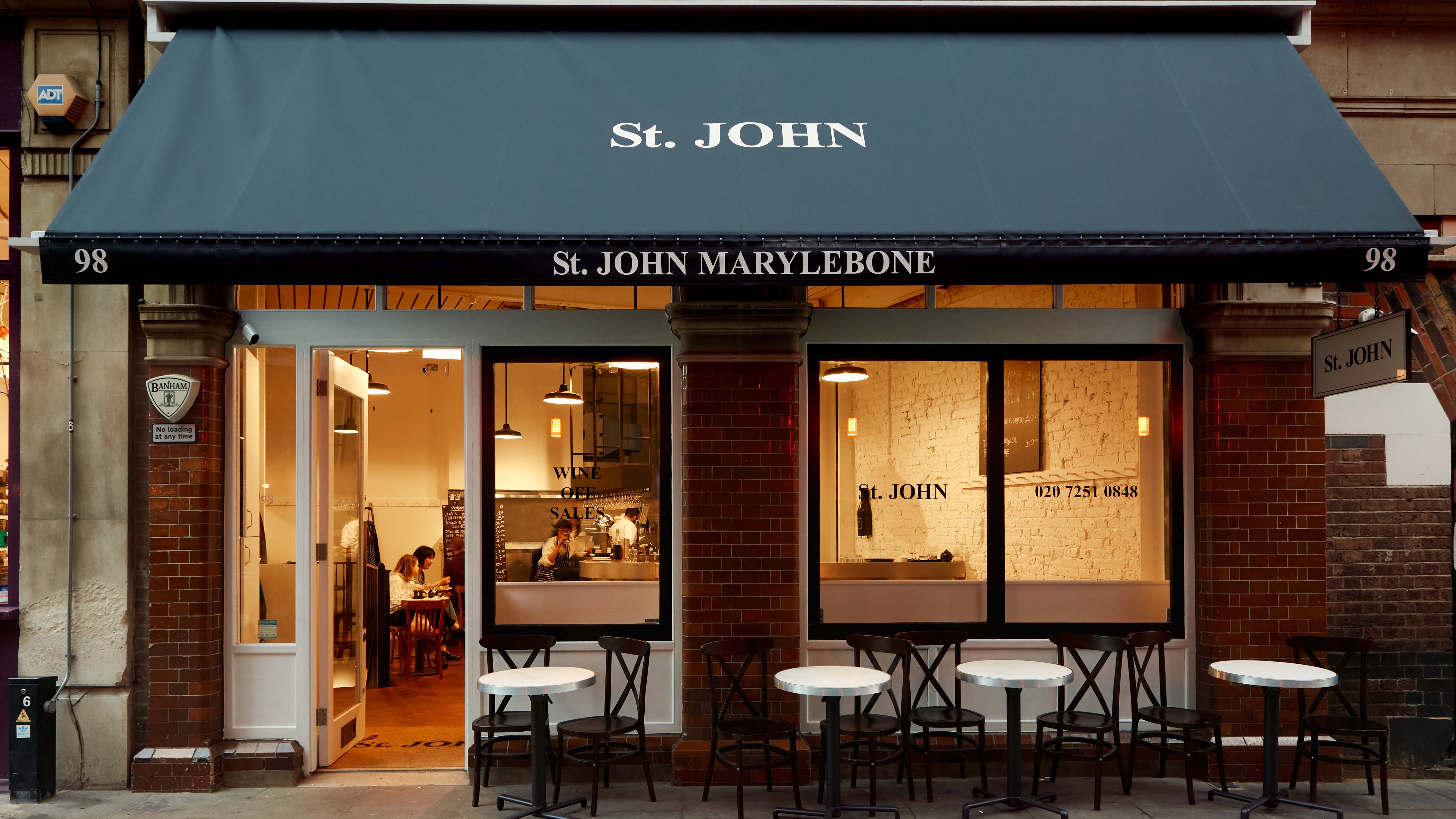
You know a revolution has succeeded when the changes it wrought become so ubiquitous you can hardly remember what life was like before it. It happened with the internet, with the smartphone, and with St John.
The story of the London restaurant has been told many times, by many people – including us and a compendium of artists, fashion designers, and architects in the Wallpaper* October 2022 ‘Icons’ issue. Yet for those who don’t already know, the original St John was founded in 1994 by chef Fergus Henderson (a guest editor of the October issue with his wife Margot) and Trevor Gulliver in a converted smokehouse near the Smithfield meat market. The menu pioneered the concept of ‘nose-to-tail’ eating wherein every part of the animal is used, including parts less popular in Western cooking, like the intestines and the brain.
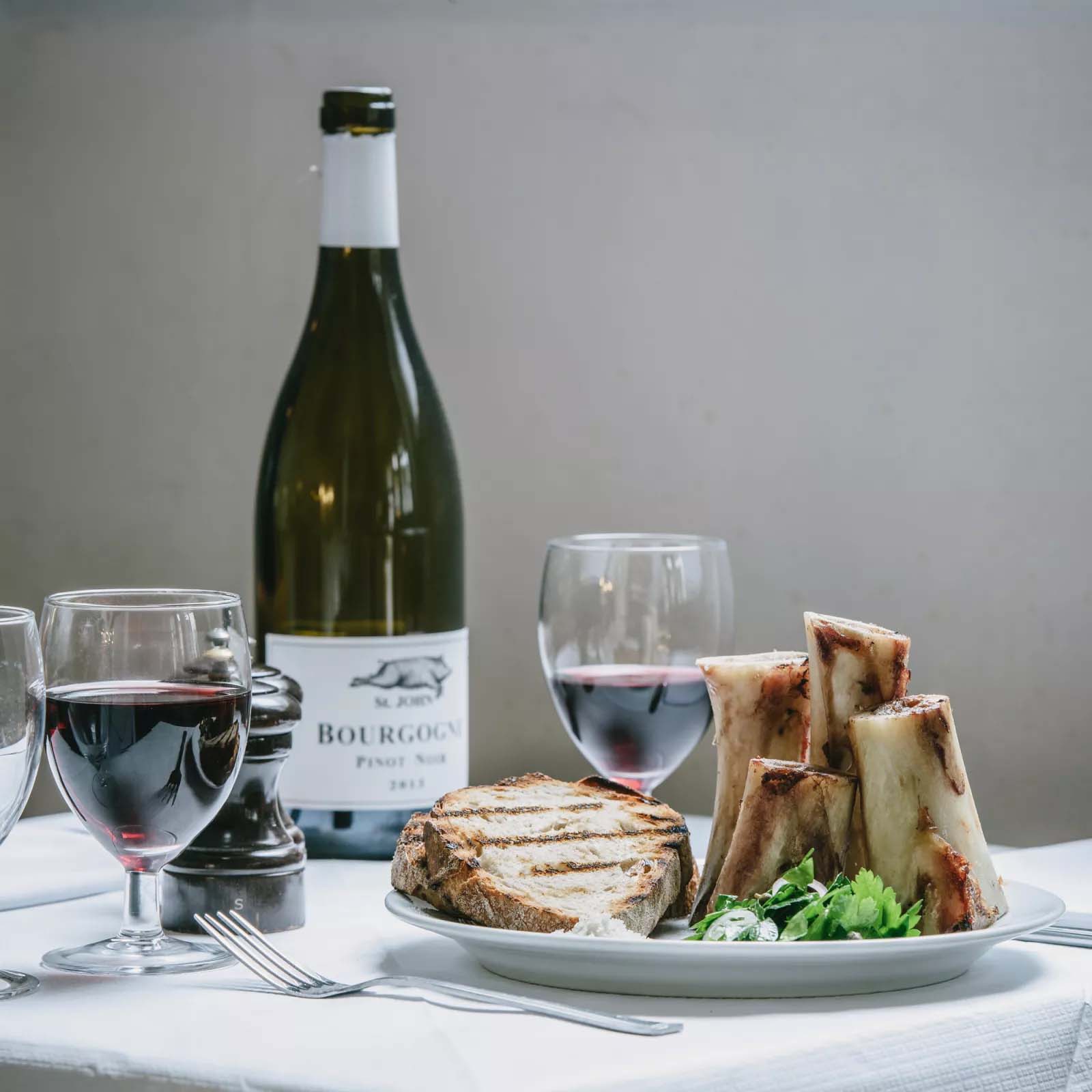
St John Bourgogne Pinot Noir and a plate of bone marrow
The original St John has become a blueprint for many noteworthy restaurant launches since. In London alone, Café Cecila, Primeur, Bistrotheque and Manteca have all adopted a similar approach, with a few of the head chefs actually being St John alumni.
Now St John has opened the doors of a new Marylebone outpost, Henderson and Gulliver’s first restaurant launch in more than a decade.
St John Marylebone

Interiors of St John Marylebone
St John Marylebone will be a natural extension of its forebear, with particular adjustments made to accommodate the unique needs of the area. As Gulliver says, ‘a restaurant must never forget the building’ or, for that matter, the neighbourhood outside.
The new Marylebone outpost responds to the area’s cloistered, neighbourhood feel by offering early morning coffees and pastries for those commuting to work. Later in the day, a menu of small plates appears on the iconic blackboard. While the menu changes daily, visitors can expect to find St John classics like Bone Marrow Toast and Parsley Salad; Deep Fried Welsh Rarebit; and Onion Soup, as well as homemade pickles, jellies and chutneys served alongside British cheeses. And, of course, a fine selection of French wines including those selected from St John’s very own vineyards in Languedoc.
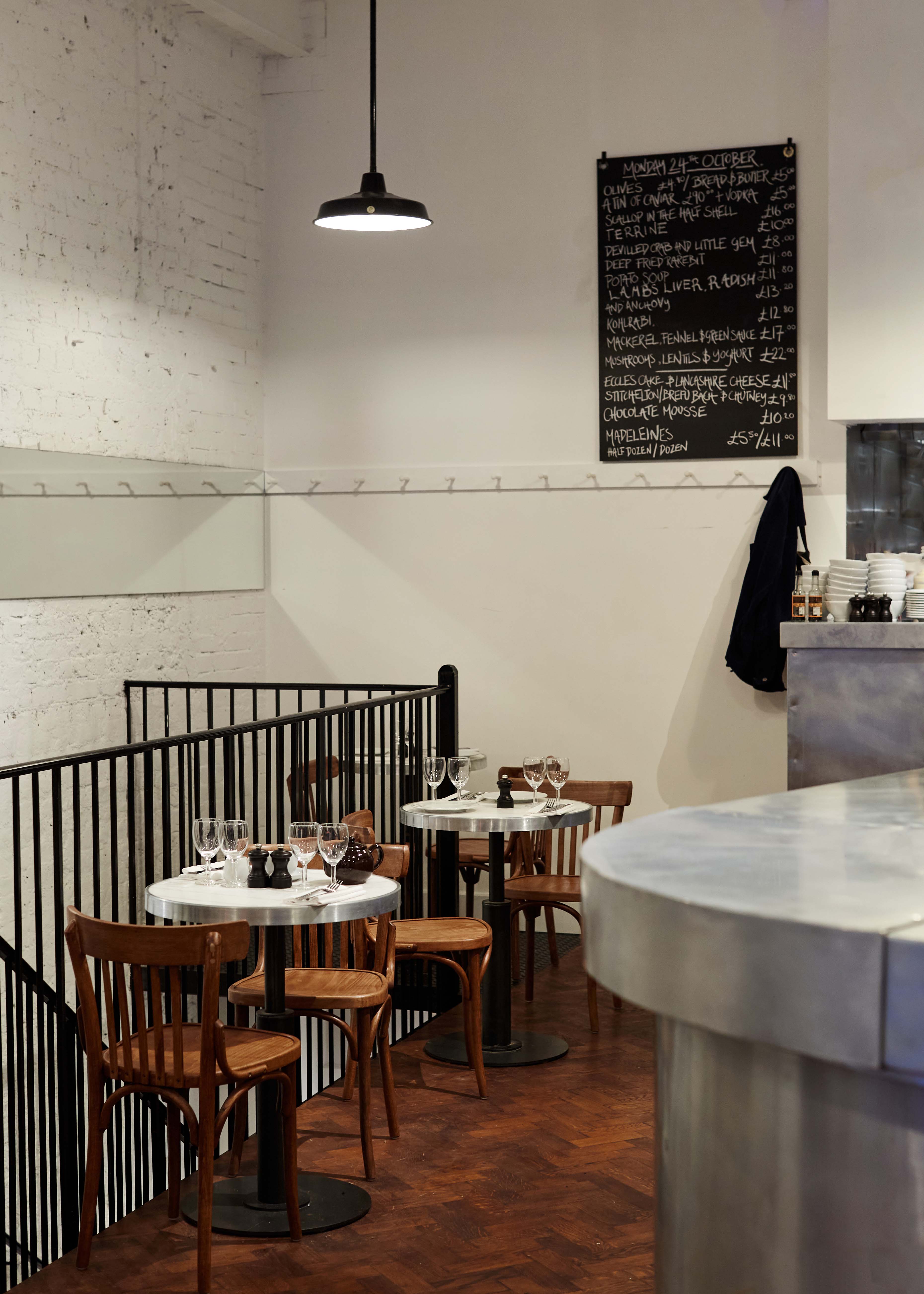
Interiors of St John Marylebone
The restaurant’s expansive dining space is made to accommodate Marylebone’s bustling clientele, which spans locals, tourists, and workers from the surrounding offices. The upper level of the two-floored space is reserved for walk-ins, who can grab a spot at the bar or take a seat at the tables; downstairs is an open-plan dining room with large wooden tables designed for reservations big and small. As with all the St John outposts, the Marylebone location has an air of what Henderson calls ‘relaxed formalness’.
Receive our daily digest of inspiration, escapism and design stories from around the world direct to your inbox.
‘You can have a pint, buy a loaf of bread, it's a bar, a bakery, a restaurant, the space lends itself gently to relaxed rigour,’ says Henderson.
Fergus Henderson recalls creating the first St John
Henderson and Gulliver certainly have an eye for a space. The former smokehouse that houses the first St John in Smithfield was being used as a squat before they took it over, and may have seemed unpromising to most.
Henderson trained as an architect prior to becoming a chef and it was his idea to paint the walls white, in effect creating an atmosphere of almost clinical simplicity that was emphasised by the decision (uncommon in restaurants then) to have no art, no music, and minimal table settings. The space’s high ceilings lent it the feeling of a cathedral, one vaulted with bars once used to hang meat. ‘I remember one idea had been to incorporate the thick black gunk from the smokehouse,’ recalls Henderson about the soot and grease that clung to the bars. ‘Luckily we moved on from that one.’

Interiors of St John Marylebone
While a team of workmen was deployed to remove the remnants of the smokehouse’s former life, its individuality was retained. ‘The space had its own natural flow to it,’ says Henderson. ‘It seemed obvious where the dining room would be. The pastry area downstairs started off as an oyster bar in one chimney and a coat check in another – but sadly neither the oyster bar nor the coat check lasted that long; instead they turned into our first bakery and bakery storage.
‘I wanted activity going around everyone. The bar guests sat in the middle of a bakery and now the pastry section and storage. It is great theatre when chefs come out of the downstairs prep area carrying suckling pigs, high drama.’
It is touches like these that prevent the space from sliding into minimal severity and cultivate a feeling of exuberant liveliness. The use of a zinc bar top, which ‘wilts and settles with time’ is a similar considered detail.
Now the new St John Marylebone is set to carry on the St John legacy.
‘I think the value of St John is bringing it to new people and to young chefs,’ says Gulliver. ‘To people that want to work in the business, we almost have a kind of responsibility.’
Mary Cleary is a writer based in London and New York. Previously beauty & grooming editor at Wallpaper*, she is now a contributing editor, alongside writing for various publications on all aspects of culture.
-
 Can the film 'Peter Hujar's Day' capture the essence of the elusive artist?
Can the film 'Peter Hujar's Day' capture the essence of the elusive artist?Filmmaker Ira Sachs and actor Ben Whishaw bring Peter Hujar back to the front of the cultural consciousness
-
 New tech dedicated to home health, personal wellness and mapping your metrics
New tech dedicated to home health, personal wellness and mapping your metricsWe round up the latest offerings in the smart health scene, from trackers for every conceivable metric from sugar to sleep, through to therapeutic furniture and ultra intelligent toothbrushes
-
 Out of office: The Wallpaper* editors’ picks of the week
Out of office: The Wallpaper* editors’ picks of the week'Tis the season for eating and drinking, and the Wallpaper* team embraced it wholeheartedly this week. Elsewhere: the best spot in Milan for clothing repairs and outdoor swimming in December
-
 Unleash your socialising superpowers with the Wallpaper* Entertaining Issue, on sale now
Unleash your socialising superpowers with the Wallpaper* Entertaining Issue, on sale nowGet your sublime supper party started – or hit the town in style – with the December 2025 issue of Wallpaper*, on newsstands now
-
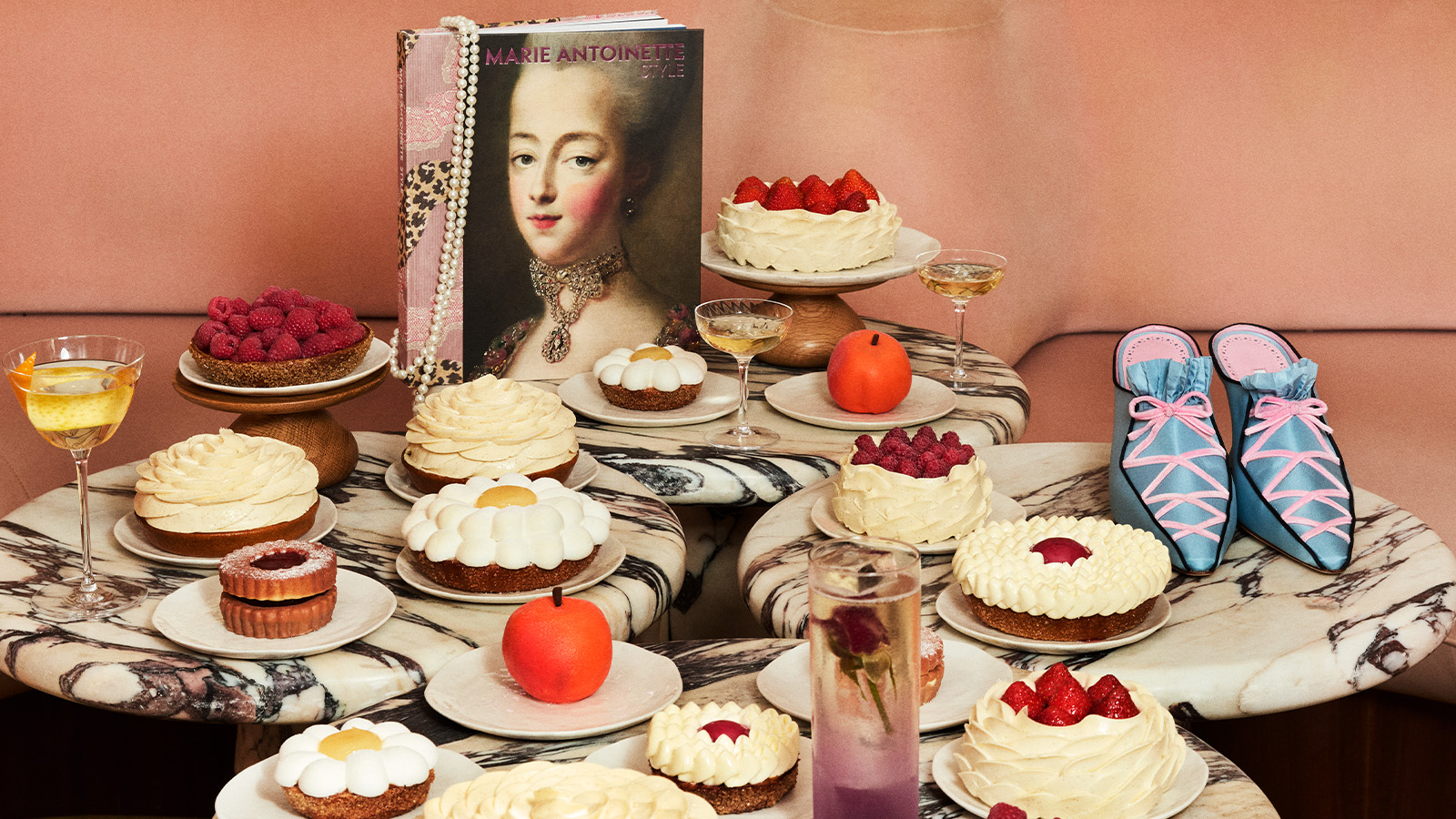 Let them eat cake (and drink cocktails) as Manolo Blahnik and The Berkeley unveil a new menu fit for a queen
Let them eat cake (and drink cocktails) as Manolo Blahnik and The Berkeley unveil a new menu fit for a queenThe hotelier and renowned designer has teamed up on an exclusive cake and cocktail menu to celebrate the V&A’s landmark exhibition ‘Marie Antionette Style'
-
 The artistry of Japanese wine
The artistry of Japanese wineFine wine from Japan may not yet register highly on the radars of most oenophiles, but for those who know, it's a hugely rewarding and rich tapestry of flavour. Drinks expert, Neil Ridley visits London's Luna Omakase for the launch of a new dedicated Japanese wine pairing menu
-
 From The Fat Badger to The Bull, how Public House is redefining the British pub
From The Fat Badger to The Bull, how Public House is redefining the British pubInside the design-driven food group putting provenance, craft and community back at the heart of pub culture
-
 Guests dined on Bangladeshi-inspired cuisine at the Serpentine Summer Party 2025
Guests dined on Bangladeshi-inspired cuisine at the Serpentine Summer Party 2025The party marked the 25th anniversary of the Serpentine Architecture Pavilion – and celebrated this year’s design by Bangladeshi architect Marina Tabassum and her Dhaka-based firm
-
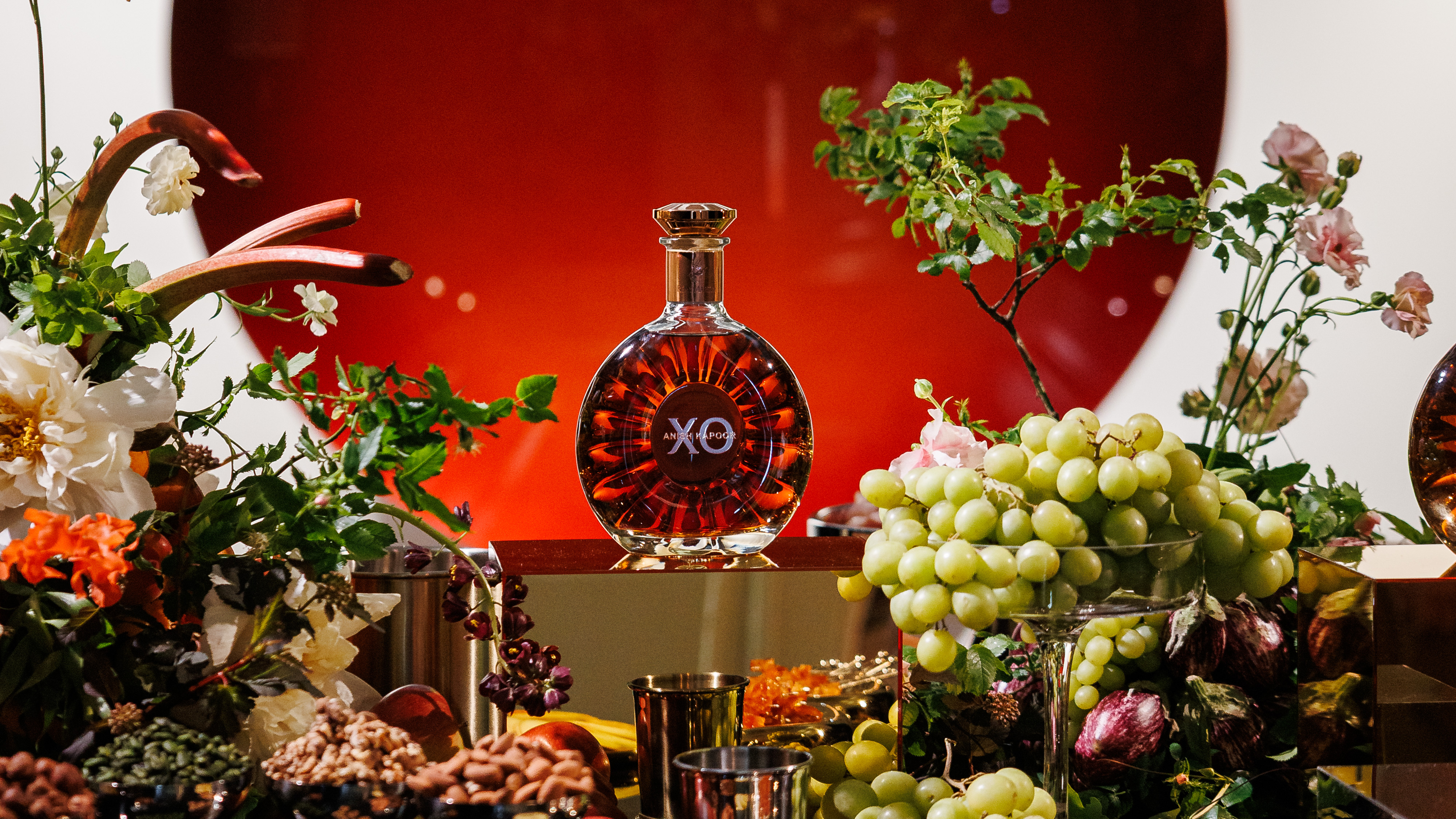 Rémy Martin and Anish Kapoor: art meets cognac in London
Rémy Martin and Anish Kapoor: art meets cognac in LondonThe cognac house and the artist unveiled a limited-edition XO decanter and a new sculpture in London at a recent event at the Institute of Contemporary Arts
-
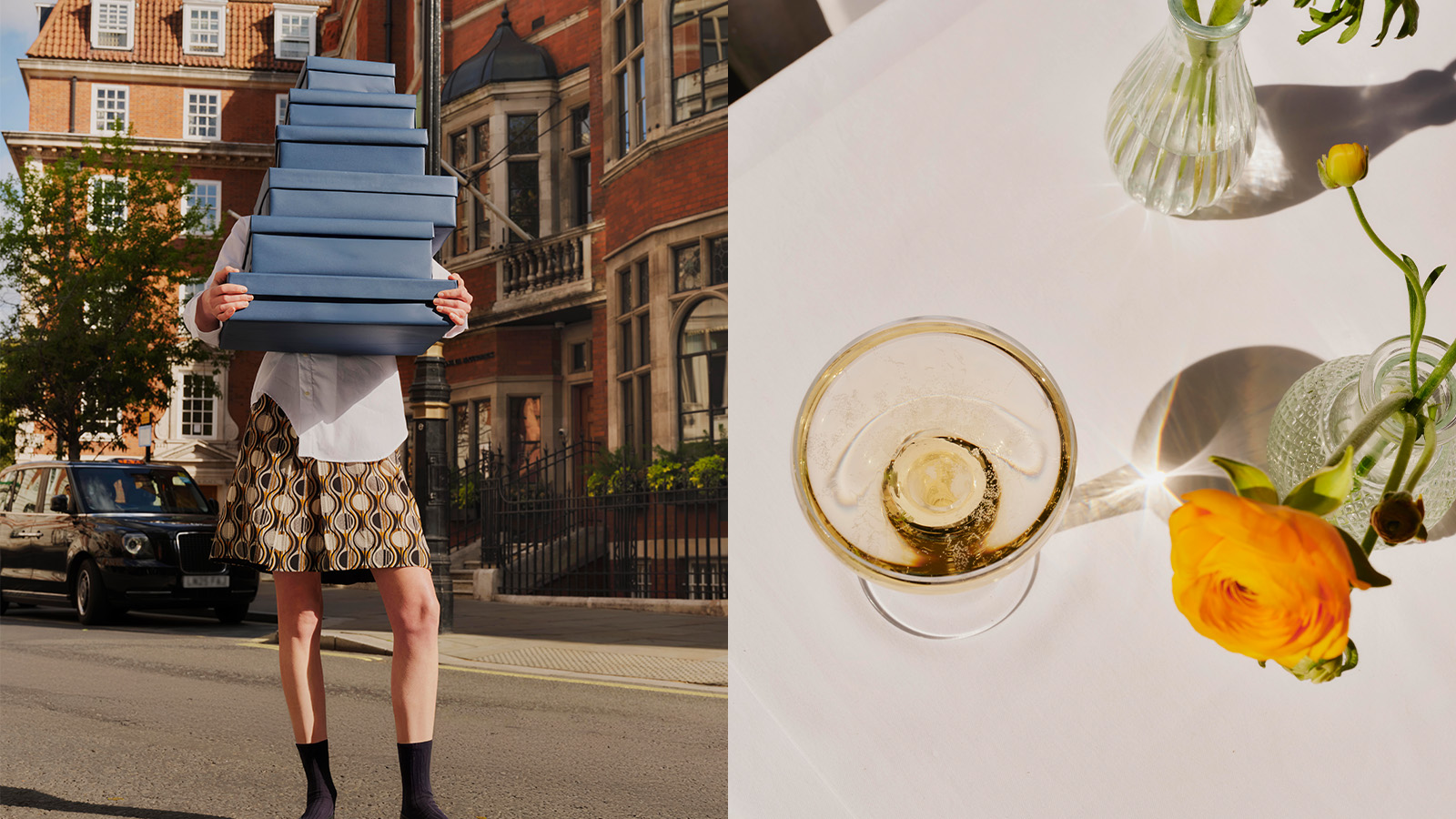 Mark your calendars for Mount Street Neighbourhood Summer Festival, a feast for the senses
Mark your calendars for Mount Street Neighbourhood Summer Festival, a feast for the sensesThe event, 12-14 June 2025, showcases the mix of food, art and community in the heart of London’s Mayfair. Here's what to expect, from afternoon tea to aperitivo, film screenings to biodynamic flowers
-
 Healthy chocolate? Eat it at Makers, London’s new Lebanese chocolatier
Healthy chocolate? Eat it at Makers, London’s new Lebanese chocolatierLocated in Chelsea, Makers is a new ‘healthy chocolate’ shop offering treats free of refined sugar, seed oils, wheat and dairy – and it tastes delicious